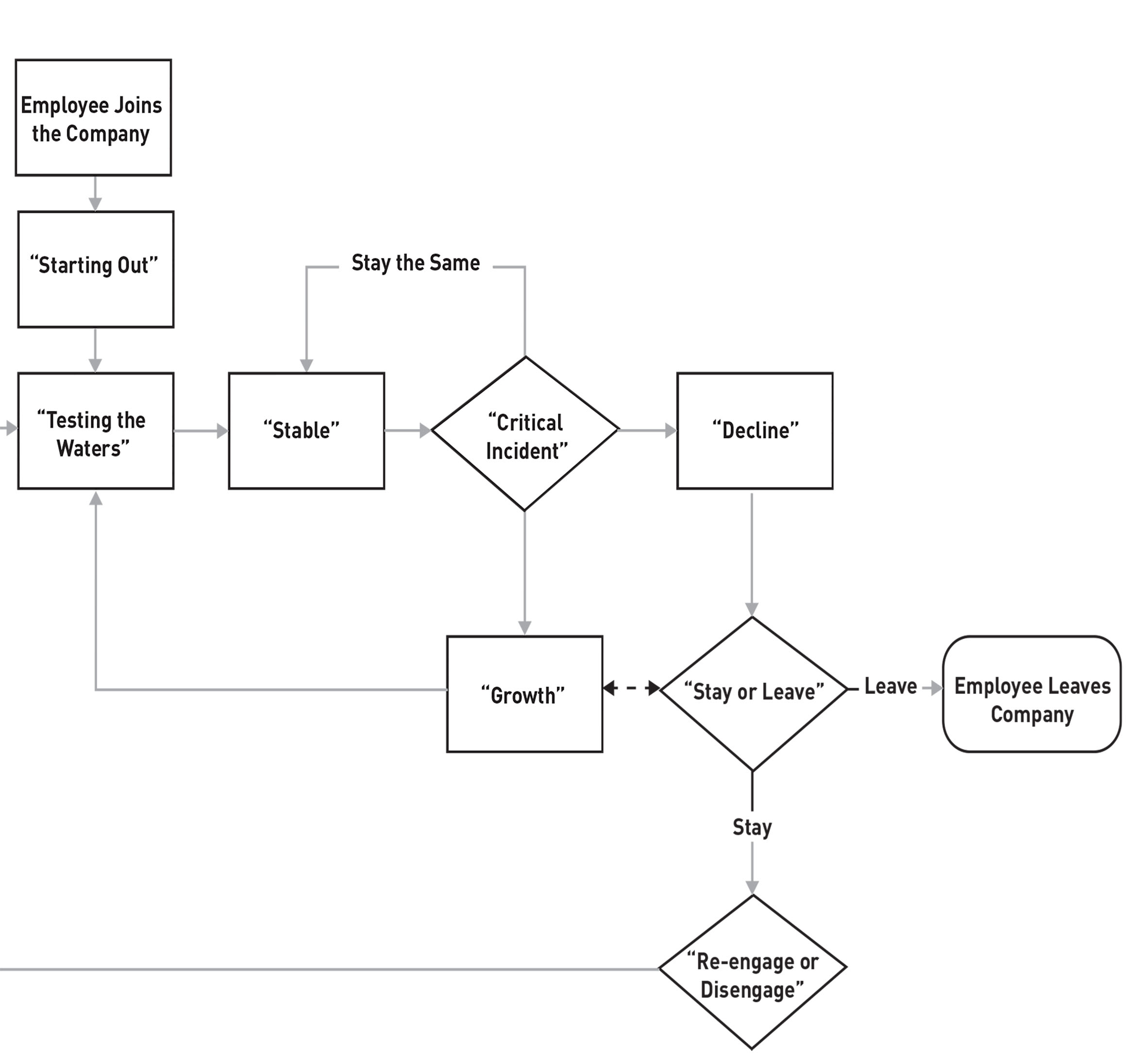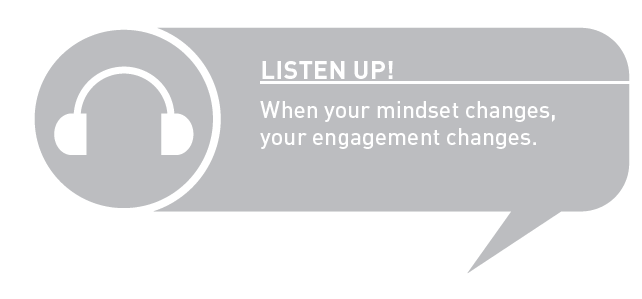Introduction
Employee engagement is a process. In the next few chapters, we present its steps so that you can identify where your employees are in this process. The results of your assessment will help you to continue planning what you will do to promote employee engagement in your team. We begin our discussion of each step with a general overview. We also link the engagement drivers that we discussed in chapter 1 to each step. Later, we give you examples of typical employee behaviors in that step. Further, we recommend actions for you as a manager to take and to avoid; in other words, “dos and don’ts” for you to target the needs of your employees in that step. As you have seen so far in this book, each section contains questions for you to think about so that you can continue to apply what you have learned to your particular situation.
Before we start, here is something to consider: How engaged and in which step your employees are may be related to where they are in their careers and personal circumstances.
Engagement “I” Path
Our employee engagement model is called Engagement “I” Path. At first, you may think that we are suggesting that all employees go through all the steps in the same sequence. You may even think that we are contradicting ourselves after emphasizing the role of individual differences in engagement in other sections of this book. To clarify this important point, we are proposing a process model because it allows us to organize what happens in each step and to show how an employee goes from one step to the next one. Based on our research and our work, in many instances employees do go through steps in a particular order and then start all over again. However, as we have said before, each employee is different and we encourage you to pay attention to those differences. Moreover, in many cases, how an employee progresses from one step to the next will depend on what happens at a particular step, among other factors. As a manager, your job is to optimize that uniqueness to maximize employee engagement, acknowledging that some factors that affect employee engagement are outside of your span of control.
Figure 1 depicts the process that we propose: The process begins when the employee joins the organization in the Starting Out step, which usually lasts throughout the first six months of employment. As she learns her way around the company, the employee enters the Testing the Waters step, which may extend until the first anniversary in the company. As she becomes more comfortable in the workplace, she enters the Stable step, and may stay there for a long time. If during the Stable step the employee goes through a Critical Incident, this could affect the employee’s next move. She may return to the Stable step if her engagement is not affected by the Critical Incident, and then move to the Growth step. The employee who is in the Growth step may debate whether to Stay or Leave, or continue back to the Testing the Waters step, continuing the process from there. Although this may seem counterintuitive at first, the employee’s experience every time that she moves forward will be comparable to starting something new all over again, therefore, she will need to find out if she made the right choices and if she is receiving what she expects before continuing moving along the Engagement “I” Path. In other words, she needs to step back to jump forward.
Figure 1 Employee Engagement "I" Path

Alternatively, if the Critical Incident negatively affects the employee’s engagement, she may enter the Decline step. If the employee enters the Decline step, she will choose whether to Stay or Leave. If she decides to Stay, she will enter the Re-engage or Disengage turning point and will return to the Testing the Waters step. Every time that an employee moves to a new step, she goes through a “reality check” of her new circumstances because, for her, the world changed and only by Testing the Waters will she know what is going on. If she decides to Leave, she could do so mentally, physically, or both, and her progression through the Engagement “I” Path will end.
We will now look at each one of these steps in detail. Chapter 3 will cover Starting Out and Testing the Waters, followed by chapter 4, which takes us into the Stable step as well as the Critical Incident. In chapter 5 we’ll cover the options of Growth versus Decline, and chapter 6 wraps up the process with Stay or Leave and Re-engage or Disengage. At the end of the description of the entire process, we will cover the Key Points and Takeaways.

